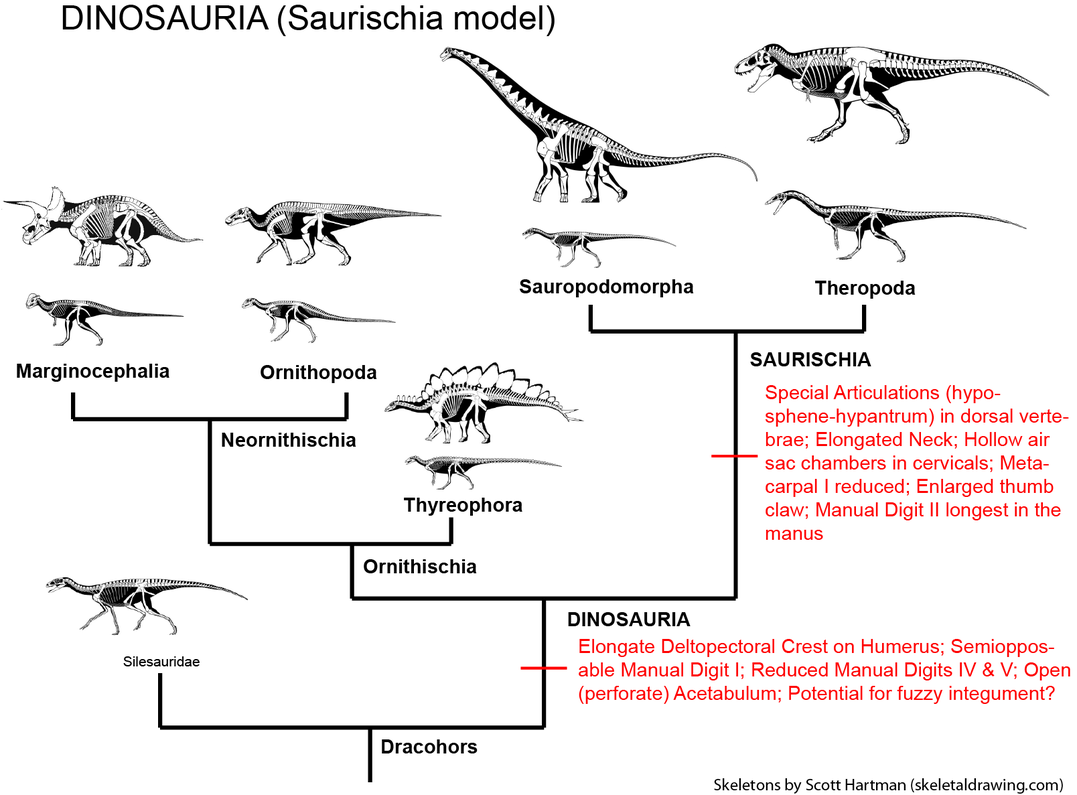
Image courtesy of Thomas Holtz and the University of Maryland.
 Copyright © Michael Richmond.
This work is licensed under a Creative Commons License.
Copyright © Michael Richmond.
This work is licensed under a Creative Commons License.
Your job is to use the cosmic calendar to describe the time when an event occurred in the distant past.
As you know, life on Earth has undergone a profound radiation and evolution: one type of animals or plants will gradually turn into another -- or several others. Over time, one can trace long, complicated lineages connecting lifeforms which thrived at different times.
For example, the chart below shows the relationships between different types of dinosaur. Note that therapods like Tyrannosaurus (top right) and ceratopsians like Triceratops (top left) are separated by many branches. That means that the most recent common ancestor of Tyrannosaurus and Triceratops must have lived long, long before either of those creatures.

Image courtesy of
Thomas Holtz and the University of Maryland.
Paleontologists have created detailed trees showing the relationships between all sorts of animals. In many cases, they can identify reasonably well the most recent common ancestor of any two animals, and even estimate how long ago that ancestor lived.
So, here's the task for you:
Scan or photograph all your notes and calculations, creating a single PDF file with all the material. Submit the PDF file via the myCourses "Assignments" facility.
 Copyright © Michael Richmond.
This work is licensed under a Creative Commons License.
Copyright © Michael Richmond.
This work is licensed under a Creative Commons License.